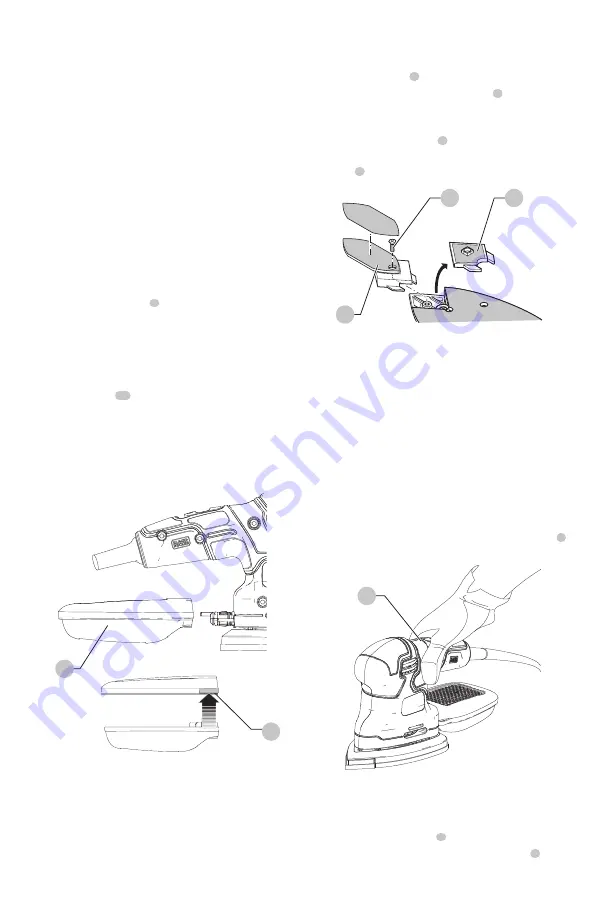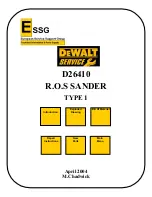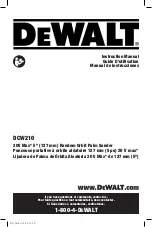
5
English
Dust Extraction (Fig. C)
To Empty Dust Canister:
CAUTION:
Respiratory hazard. Never operate this tool
for wood sanding unless the dust canister is in place.
Sanding dust exhaust may create a breathing hazard.
WARNING:
Fire hazard. Collected sanding dust from
sanding surface coatings (polyurethane, linseed
oil, etc.) can self-ignite in sander dust canister or
elsewhere and cause fire. To reduce risk, empty canister
frequently and strictly follow sander manual and
coating manufacturer’s instructions.
WARNING:
Fire hazard. When working on metal
surfaces, do not use the dust canister or a vacuum
cleaner because sparks are generated. Wear safety
glasses and a dust mask. Due to the danger of fire, do
not use your sander to sand magnesium surfaces. Do
not use for wet sanding.
The dust collection canister
4
should be emptied after every
10 minutes of sanding.
1. While holding the sander, grasp the dust collection
canister and pull it off of the sander as shown in Fig. C.
2. Hold the canister just inside a garbage can to ensure
dust is contained.
3. Push up on tab
10
to separate the top of the canister
from the bottom as shown in Fig. C.
4. Gently shake or tap the top and bottom of the canister
to empty.
5. Reattach the top and bottom and firmly push the
canister back onto the sander.
Finger Attachment (Fig. D)
The finger attachment is used for fine detail sanding.
1. Remove the screw
9
.
2. Remove the diamond-shaped pad tip
6
from the base.
3. Fit the finger attachment onto the sanding base as
shown in Fig. D.
4. Fit and tighten the screw
9
.
5. Align the proper sanding sheet with the
finger
7
attachment.
Proper Hand Position (Fig. E)
WARNING:
To reduce the risk of serious personal
injury,
ALWAYS
use proper hand position as shown.
WARNING:
To reduce the risk of serious personal
injury,
ALWAYS
hold securely in anticipation of a
sudden reaction.
Proper hand position requires one hand on the back handle
2
.
OPERATION
WARNING: To reduce the risk of serious personal
injury, turn unit off and disconnect it from
power source before making any adjustments or
removing/installing attachments or accessories.
An accidental start-up can cause injury.
Fig. D
7
6
9
Switch
(Fig. A, E)
•
To turn the tool On,
hold it as shown in Figure E and
push the ON/OFF switch
1
toward the front of the tool.
•
To turn the tool OFF,
pull the ON/OFF switch
1
away
from the front of the tool.
Fig. C
4
10
Fig. E
2








































